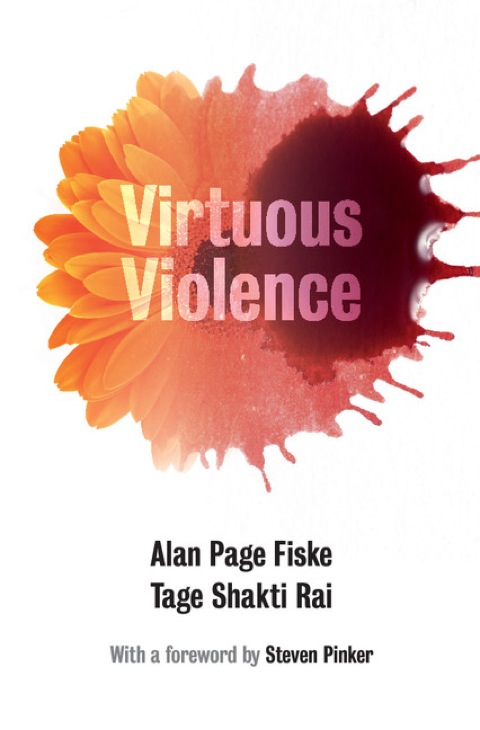Description
Efnisyfirlit
- Coverpage
- Half title page
- Title page
- Copyright page
- Dedication
- Contents
- Figures and tables
- Foreword by Steven Pinker
- Warm thanks
- The point
- 1 Why are people violent?
- What we mean by “violence”
- Natural aversion to killing and hurting
- What we mean by “moral”
- Conflicting moralities and post-hoc justifications
- Pain and suffering are not intrinsically evil
- Forerunners of virtuous violence theory and how it goes beyond them
- Scope: what we are and are not discussing
- Illegitimate, immoral violence
- 2 Violence is morally motivated to regulate social relationships
- Fundamental ways of relating: the four elementary relational models
- Cultural implementations of universal models
- Constitutive phases
- Metarelational models
- 3 Defense, punishment, and vengeance
- Defense and punishment
- Vengeance
- Metarelational retribution
- Violence due to conflicting models
- 4 The right and obligation of parents, police, kings, and gods to violently enforce their authority
- Corporal punishment of children
- Violence in the military
- Violent policing
- Violence by gods
- Explanations of accidents, misfortune, and suffering
- Trial by ordeal and combat
- Metarelational aspects of authority-ranking violence
- 5 Contests of violence: fighting for respect and solidarity
- Knighthood in medieval Europe
- Gang and criminal cultures
- Fighting among and alongside the gods
- Sports
- Fighting among youths
- Metarelational aspects of fighting for respect and solidarity
- 6 Honor and shame
- Guest–host relationship
- Honor killing
- Honor violence in the United States
- Honor among thieves
- How the metarelational honor model organized the violence of the Trojan War
- 7 War
- The motives of leaders and nations
- The moral motives that move soldiers to go to war
- Killing under orders
- Killing for your comrades
- Extremist violence and terrorism
- 8 Violence to obey, honor, and connect with the gods
- Gods command violence
- Sacrificing animals and humans to the gods
- Self-sacrifice to the gods
- China
- American Indians
- Christian monastic asceticism
- Christian and Muslim self-flagellation
- Theoretical elaboration
- 9 On relational morality: what are its boundaries, what guides it, and how is it computed?
- Defining the moral space
- Distinguishing between moral and immoral relationship regulation
- What are the cultural preos delimiting violence?
- Going beyond the culturally prescribed limits to violence
- Is morally motivated violence rational and deliberative or emotional and impulsive?
- 10 The prevailing wisdom
- Are most killers sadists and psychopaths?
- Are killers rational?
- Are killers impulsive?
- Are killers mistaken?
- 11 Intimate partner violence
- Intimate partner violence is widespread
- Intimate partner violence is morally motivated to regulate relationships
- 12 Rape
- Rape in war
- Gang rape
- 13 Making them one with us: initiation, clitoridectomy, infibulation, circumcision, and castration
- Initiation rites
- Circumcision and excision
- Eunuch opportunities
- 14 Torture
- Motives of leaders who order torture
- Motives of torturers
- Motives of the public that approves of the use of torture
- 15 Homicide: he had it coming
- How many homicides are morally motivated?
- Mass murder
- Homicides committed by the mentally ill
- Metarelational motives for homicide
- 16 Ethnic violence and genocide
- Violence against African-Americans in the US South
- Genocide
- Null attitudes and dehumanization in the perpetuation of mass violence
- 17 Self-harm and suicide
- Non-suicidal self-injury
- Suicide
- 18 Violent bereavement
- Why are people sometimes enraged by death?
- 19 Non-bodily violence: robbery
- Robbery for equality-matching vengeance
- Robbery for authority-ranking status
- 20 The specific form of violence for constituting each relational model
- Communal sharing violence: indexical consubstantial assimilation
- Authority-ranking violence: iconic physics of magnitudes and dimensions
- Equality-matching violence: concrete ostensive operations
- Market-pricing violence: arbitrary conventional symbolism
- 21 Why do people use violence to constitute their social relationships, rather than using some other medium?
- Criticality
- 22 Metarelational models that inhibit or provide alternatives to violence
- 23 How do we end violence?
- Civil disobedience and hunger strikes
- Urban gang homicide
- 24 Evolutionary, philosophical, legal, psychological, and research implications
- Evolution
- Philosophy
- Law
- Psychology
- Research
- The dénouement
- What do we mean by “most” violence?
- The need for general explanations
- References
- Index






Reviews
There are no reviews yet.